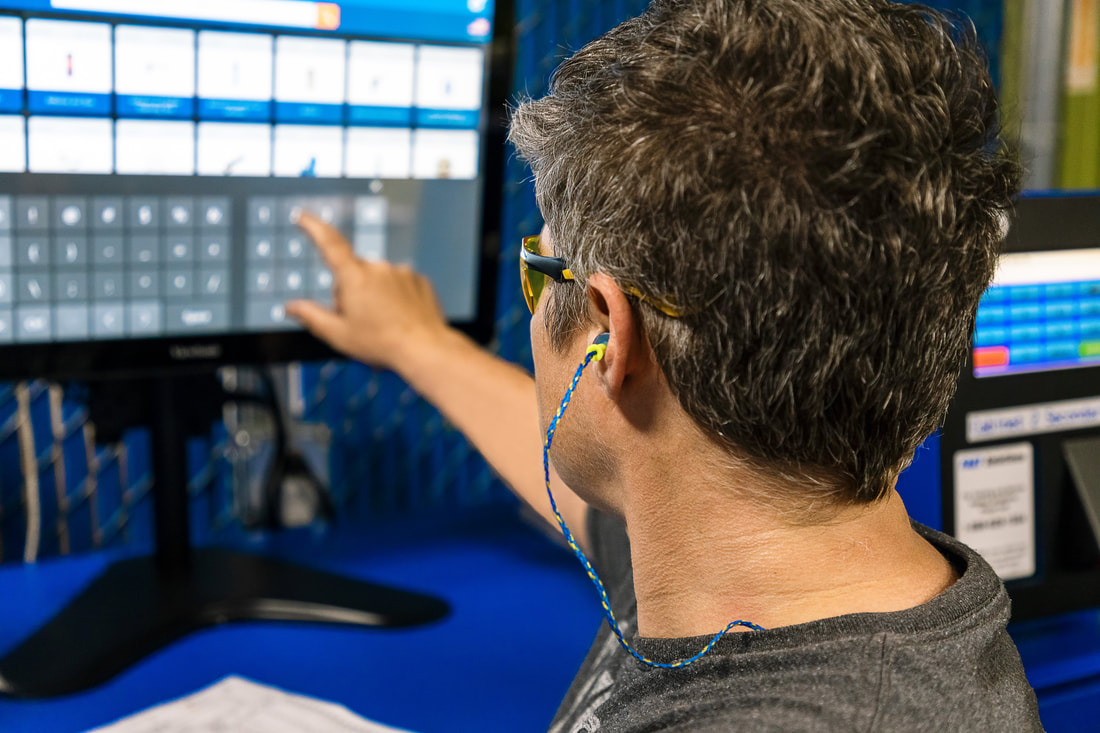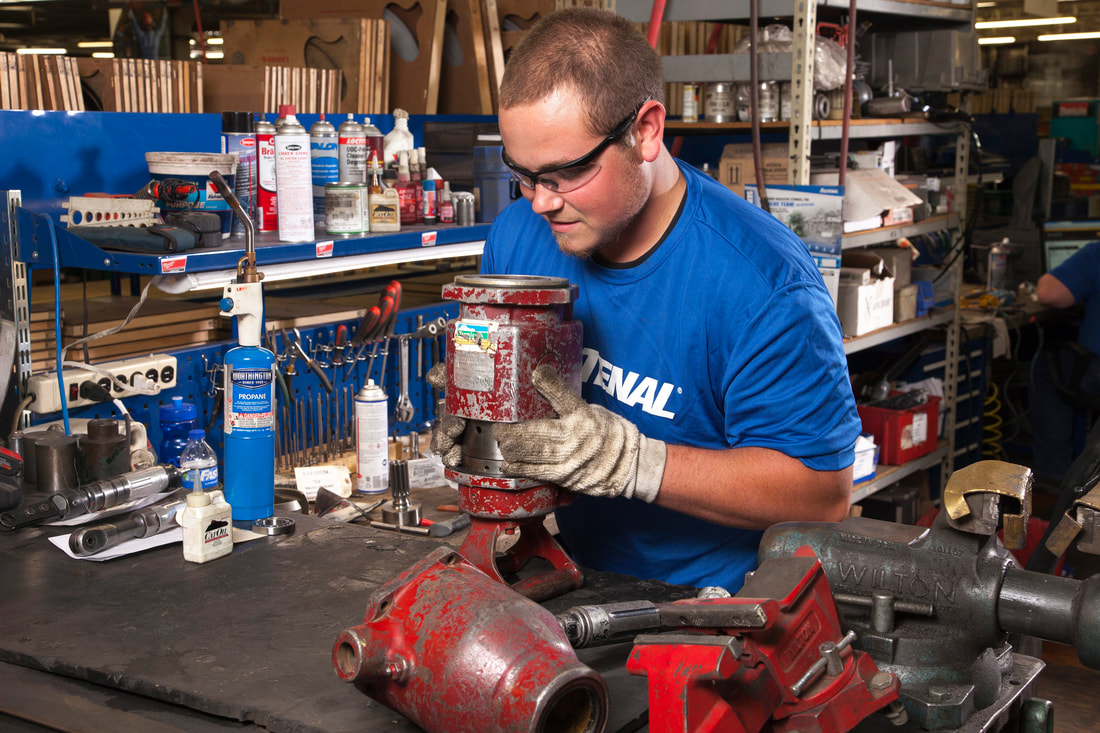How to unlock the benefits of a Lean and green supply chain
June 5, 2023
By Brent Roeder | VP of Safety, Metalworking, and Sustainability
By Brent Roeder | VP of Safety, Metalworking, and Sustainability
|
Is having a more environmentally sustainable supply chain important to you?
Is it more (or less) important than business considerations like TCO, working capital, and productivity? No matter how you answer these questions, this article will likely hit home. Because when it comes to supply chain performance, you can’t disentangle the environmental and financial impacts – they go hand in hand. Think about it: When you control product consumption and right size your inventory, you’re not just reducing expenditures and assets. You’re also reducing material waste and upstream transportation. When you consolidate vendors and limit ad hoc purchases, you’re not just leveraging spend and reducing administrative and freight costs. You’re also reducing fuel consumption and emissions (with fewer, fuller shipments coming from fewer points of origin). From a 30,000-foot view, when you reduce waste in any form – material, motion, energy, floorspace, etc. – it allows you to apply equivalent resources to value-creating activities. This is at the heart of Lean thinking: that there’s an inverse relationship between waste and value; more of one means less of the other. It’s also at the heart of Fastenal’s value proposition. Things like productivity gains and cost savings are outcomes of a deeper mission: to help your organization become more resource-efficient across the supply chain – or even more fundamentally, to help you create more value, more efficiently. A systematic approach to reduce consumptionToday, technology is helping organizations build Leaner and, by extension, greener supply chains. In fact, if you’re using FMI Technology devices to automate inventory management, you already have a system in place to operationalize your sustainability goals. Here’s a look at how point-of-use technology drives efficiencies in both directions of the supply chain – upstream emissions as well as downstream waste.
Remote inventory monitoring The devices are equipped with different types of sensors to digitally report the current inventory level in each stocking location. This eliminates the need for Fastenal employees to drive to your site(s) in order to visually check your inventory. Further upstream, it allows our logistics teams to be more proactive and efficient in how we stage and transport planned product needs. Inventory visibility The FAST360° and Product Locator inventory search tools allow your employees to see if needed items are available in the facilities (and exactly where they’re located), potentially avoiding unnecessary purchases and shopping trips. Fastenal’s eCommerce platform takes it a step further, proactively informing your buyers if they’re attempting to purchase items you already have on hand as part of a Fastenal Managed Inventory program. 24/7 Access Here’s one of the paradoxes of industrial supplies: Employees often hoard items because they’re afraid of running out … which makes it more likely to run out. With limited visibility and controls in place, they also tend to over-order products. This sets the stage for another paradox, one famously summarized by Lean Six Sigma pioneer Taiichi Ohno: “The more inventory a company has, the less likely they will have what they need.” The assurance of perpetual inventory – easy access and visibility to needed products – removes the incentive for employees to hoard or over-buy supplies. This brings us to a third (and much more pleasant) paradox: Continuous access promotes less overall consumption. Access Controls Vending devices allow you to set role-specific controls so that employees only have access to products relevant to their jobs (not all of the products in the device). You can also set frequency limits so that, for example, an employee can only dispense a certain number of batteries per month without supervisor approval – another (optional) tool to control wasteful consumption. Usage Traceability Each item dispensed through a vending device can be traced to a person, place, time, and cost center. This reporting fosters a culture of accountability and illuminates opportunities to reduce future consumption (for example, by switching to a longer-lasting glove or by providing additional training to an employee who is over-using a certain tool). Asset Management Automated lockers allow you to trace tools, gauges, and other returnable assets to the most recent user, helping to prevent loss and theft. The devices can also be integrated with a Fastenal industrial services program to refurbish, rather than replace, tools. (More on this to follow.) Locker Pickup The devices are primarily used for planned needs and owned assets. However, we can also provide an on-site locker pickup solution to streamline fulfillment of unplanned orders. The environmental benefit: Instead of employees driving to Fastenal or another business to pick up urgent needs, our local teams deliver those orders (via an on-site locker) during their regular service visits. Closing the loop to create a "circular economy"According to the US Environmental Protection Agency, a circular economy “reduces material use; redesigns materials, products, and services to be less resource intensive; and recaptures ‘waste’ as a resource to manufacture new materials and products.” FMI Technology can serve as the anchor point of a circular economy for industrial supplies, but it takes additional upstream and downstream processes to “close the loop,” so to speak. Here’s a look at some services that, in conjunction with FMI Technology, can help you reduce your carbon footprint throughout the lifecycle of manufacturing, transportation, usage, and recycling … and around the circle again.
Category managementThis exercise involves analyzing the products used throughout your operations, potentially on a global scale, and looking for opportunities to streamline the supply chain by:
From there, we can dig deeper for additional environmental benefits. Is there a green product alternative that meets the application need? Can it be supplied through an FMI Technology program to reduce consumption, packaging, and upstream emissions? Can it also be included in a recycling program to support a circular economy? Product life extension servicesThe goal here is simple: reduce demand (and costs) for new product purchases by helping you keep current products in use longer through maintenance, repair, and refurbishment.
Tool Repair Service In 2022, we repaired 55,020 tools for customers across North America, helping to extend product life and, in turn, reduce material waste. The process for collecting, transporting, and returning tools largely overlaps our existing service activities and truck routes, producing minimal incremental emissions. And all scrapped tools (i.e., those deemed not cost-effective to repair) are broken down to be reclaimed or recycled. Tool & Cutter Grinding Service Our machinists can sharpen worn cutting tools to like-new condition for a fraction of the cost of buying new tools. This service reduces the amount of waste generated and can be provided in conjunction with a recycling program, further driving your sustainability goals. In 2022, we extended the service life of 312,528 cutting tools through this program. Recycling programsEverything we’ve talked about so far can help you slow the pace of consumption, but eventually every product enters the waste stream. And with that, we can finally talk about recycling, which is often the first thing that comes to mind regarding sustainability but is really the last step. Through our partnerships with key suppliers and third-party service providers, we can help you integrate a variety of waste stream solutions into your work processes. This includes programs to recycle the following products.
Contributing to operational excellenceValue isn’t always measured in financial terms. Some things bring value because they’re part of your culture, part of the brand experience you want to create for your customers, or simply part of “something bigger.” In this light, improving your environmental impact is its own form of value creation.
That said, in the business world, value is measured in financial terms. A healthy balance sheet reflects your ability to create value efficiently. It also makes everything else possible. Even if it’s not your fundamental purpose as an organization, it’s what fuels that purpose. The good news: Everything we touched on can make a positive difference on both fronts. When we work together to help you avoid over-consumption, dead inventory, redundant purchases, expedited ordering, and overlapping deliveries from multiple vendors, we’re driving waste out of your business and the environment. In this light, supply chain sustainability isn’t a side pursuit – it’s an intrinsic feature of operational excellence. To learn more about solutions to reduce consumption, risk, and cost for your business, view the Sustainability Solutions section of our ESG Report. You may also like: Vertical Divider
|
Like what you're seeing here? Subscribe to the Blue Print for FREE and get the magazine sent right to your address.
Got feedback? Email us at [email protected] |








